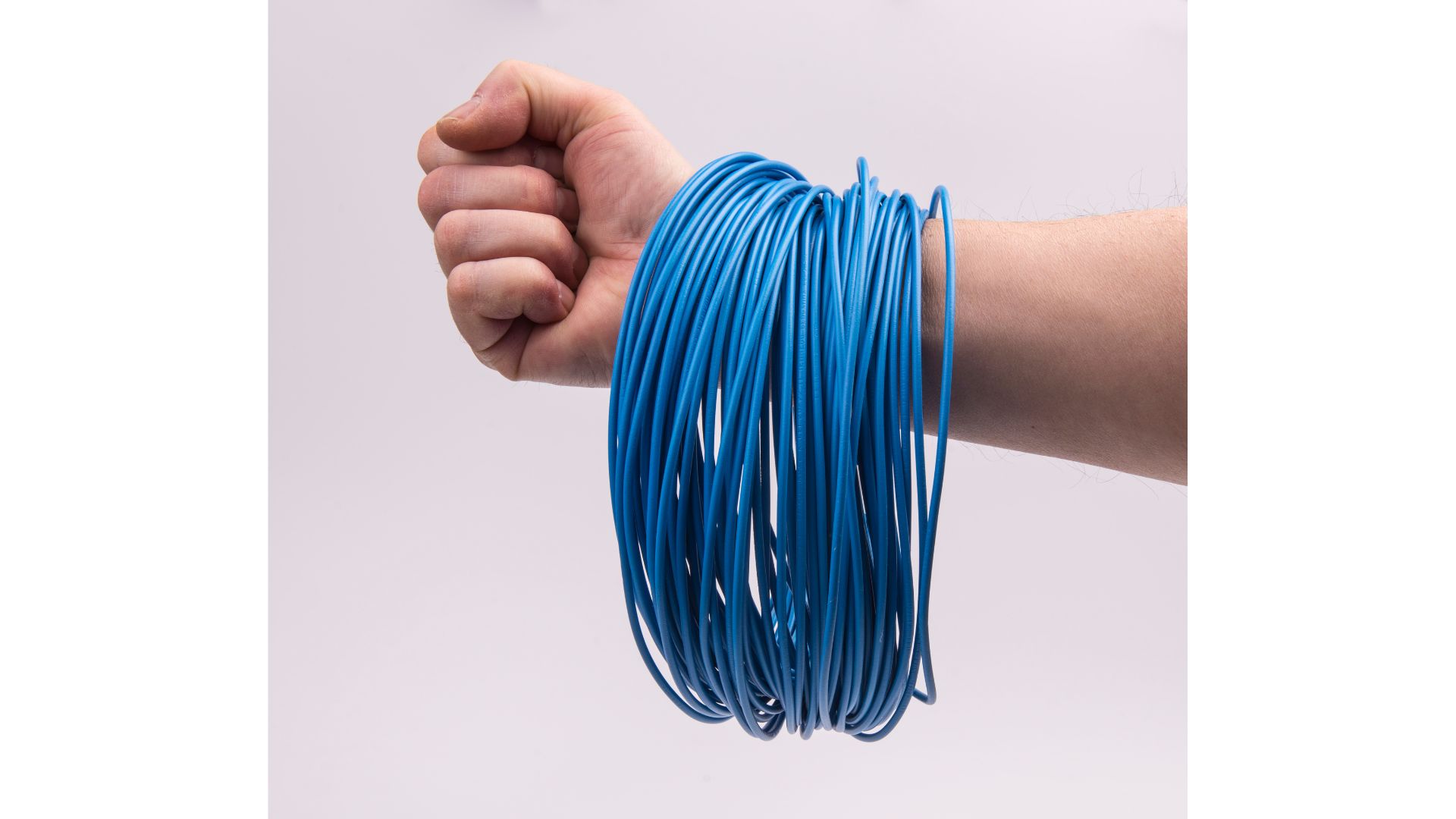A 1mm line can tolerate anywhere between 11 and 14 amps. But if your priority is 1 sq mm, the amps will depend on the installation method:
- In a conduit inside an insulated wall – 11.5 Amps
- Trunking on a wall – 13 Amps
- Clipped Direct – 16 Amps
- Surrounded by thermal insulation (Less than 100mm) and in contact with plasterboard – 13 Amps
- Surrounded by thermal insulation (More than 100mm) and in contact with plasterboard – 10.5 Amps
- Surrounded by thermal insulation and in a stud wall (Touching the wall) – 13 Amps.
- Surrounded by thermal insulation and in a stud wall (Not touching the wall) – 8 Amps.
1mm2 Wire Amp With Respect To Temperature
| Temperature | Amp Rating |
| 60° | 8A |
| 70° | 14A |
| 85-90° | 18A |
| 105° | 20A |
| 125° | 25A |
| 200° | 35A |
The installation method changes things because your biggest concern is the heat, and the installation method affects the amount of heat a cable will encounter. For instance, an electrical line in a conduit has poor ventilation.
Therefore, it will carry less power than a cable in the open air. This is because the open air allows the excess heat to dissipate. On the other hand, a conduit will retain the heat the current generates as it flows through the line.
This is why the Batt Cables table is so detailed. It shows each sq mm’s amp rating based on the installation method. It even mentions the voltage drop. If you don’t know how to interpret such tables, talk to a professional.
In fact, allow the electrician performing your installations to make these decisions. They can select a cable size that fits the installation method’s restrictions.
NOBOX7 has a video in which he forces 50 amps of electricity through a 1mm wire. But the individual in question performed this experiment in a safe workstation away from sensitive electronic components.
It would be a mistake for you to expose a 1mm wire to a 50A appliance. You will start a fire. This is what you should know about the wire size:
1). What Is Ampacity?
The amps refer to the current-carrying capacity. This is the volume of electricity a wire can safely carry. In the case of the example above, a 1mm wire can clearly tolerate 50 or more amps. Unfortunately, it cannot do so safely.
If you keep the wire size under a 50A load, the line will eventually melt and start a fire. This is why the amp rating is so important. It shows you the maximum number of amps a wire can carry without overheating. This begs the question. How many amps can a 1mm wire carry? The answer to that question is more complex than you may assume.
2). Is 1mm the same as 1mm2?
1mm and 1 sq mm are two different units of measurement. Most people that ask about the amps of a 1mm wire are actually asking about 1mm2 cables. Unfortunately, they use 1mm and 1 mm2 interchangeably, which is a mistake because these terms have different definitions.
1mm is the diameter. The closest diameter to 1mm is 1.024mm, which equates to 18AWG. 18-gauge wiring can carry 14 amps. Although 0.912mm is just as close to 1mm. It equates to 19 AWG.
1 mm2 is the cross-sectional area, which is a more accurate representation of the wire size. If you check a wire size chart, it clearly reveals the amps a 1mm2 cable can tolerate (8A – 16A).
This differs starkly from the diameter (1mm), which you won’t find in the wire size chart. Instead, you must round up or down from the closest diameter.
3). How To Find The 1mm Cable Amp Rating?
If it wasn’t clear before, you don’t calculate the amps. A wire-size chart will tell you everything you need to know. You have two options:
- Find an online table that changes mm2 to gauge. Find the wire size you want (1mm2) and identify its corresponding AWG. Use a conventional NEC wire size chart to find AWG’s amps.
- Find an online table that directly reveals each cross-sectional area’s amp rating.
Some consumers prefer to convert the sq mm to AWG because the gauge is easier to interpret. Once they know the gauge, they can use it to find other vital variables, such as the voltage drop. But you can take any approach that appeals to you.
What Is 1mm Cable Used For?

Quick Bit sells a 1mm twin and earth cable that accommodates domestic lighting circuits. The product targets 6A circuits. Although they expect the cable’s current-carrying capacity to change depending on the installation method.
For instance, a cable you clip directly can transmit more current because it can dissipate the heat more efficiently than 1mm wires running inside a wall.
The 1mm wire Edwardes sells is rated for 14 amps under normal conditions. It will also accommodate lighting circuits. But you can’t deploy it outside because the outer sheath cannot repel UV rays. From these two examples, you can see that 1mm2 wires can carry a home’s lighting circuits.
But DIY Doctor thinks you’re better off using 1.5mm cable. 1mm is fine if you don’t have a choice. The number of lights on the circuit will determine its suitability. 1.5mm gives you more room to breathe.
You can expand the lighting circuit without overloading the wiring. You can also keep the voltage drop within manageable levels. Some consumers apply 1mm to sockets. But that is a mistake. You need 2.5mm cabling.
You can’t use the same wire size for lighting circuits and sockets. Sockets will run heavy-duty appliances such as refrigerators. They need lines thick enough to tolerate larger loads.
How Many Watts Can 1mm Cable Handle?
You can’t determine the watts in a vacuum. You get this unit when you multiply the amps by the volts. Your utility provider determines the volts. But what about the amps? They will change depending on the installation method.
Considering 1.0mm wires with 14 amps. If your house uses 240V, 14A X 240V gives you 3,360 watts. If you have a 120V system, multiply 14A by 120V to get 1,680W. As you can see, the wattage is not fixed. It changes with the voltage and amperage.
And in truth, you don’t need it. You measure the breaker size and circuit size in amps. Additionally, wire size charts associate different wire sizes with amps, not watts. This is because the wire size, breaker size, and circuit size go hand in hand.
The wattage only matters to an electrical appliance. But even then, you must change an appliance’s wattage to amps to determine whether it can run on a circuit. You don’t convert the circuit size to wattage to compare it to the load.
1mm Cable VS Volts
The volts won’t influence the 1mm cable’s amps. Look at the wire size chart in your NEC handbook. As you can see, it doesn’t mention the voltage. The voltage affects the insulation, not wire size or ampacity.
1mm Cable VS Distance
The distance is vital to your calculations because it increases the resistance. And once resistance rises, the same thing will happen to the heat and voltage drop. You can respond by either reducing the load or elevating the wire size.
A thicker conductor has a lower resistance. Therefore, it can cover longer distances without overheating or burdening your electrical system with inconvenient voltage drops.

